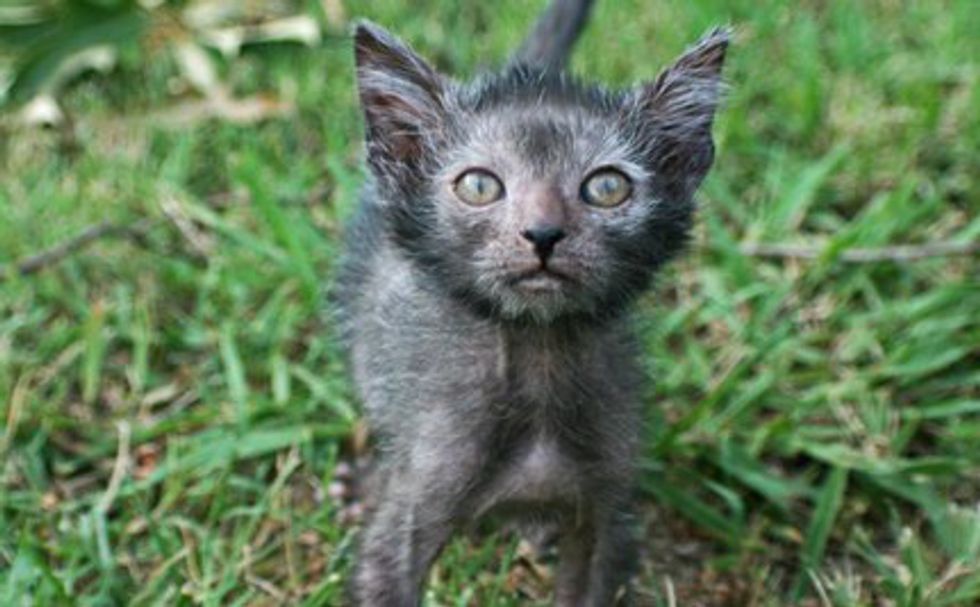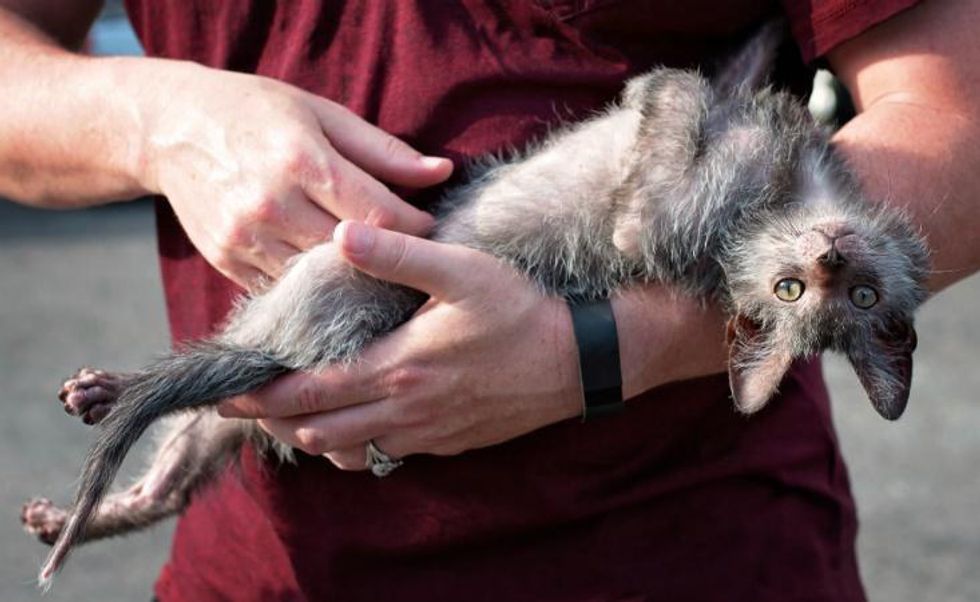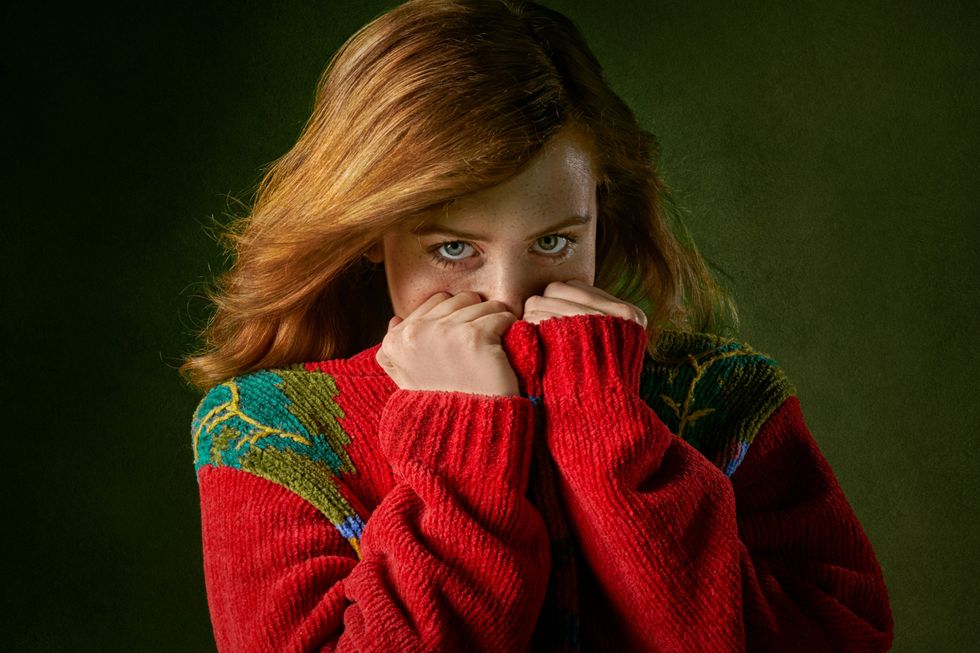The Felis Catus is otherwise known as the common house cat. The cat species has gone through many changes over the years as selective breeding has led to greater diversity in their appearance. Occasionally though, through some genetic quirk, an entirely new breed is formed.
Two prime examples of this are the Scottish Fold and the Sphynx. In the former, a mutation, which affects the cartilage, leads to their ears being folded over, hence the name of the breed. In the latter, a gene for near complete hairlessness is expressed. In the 1960s, this breed was later bred for popularity, and was eventually recognized as a new breed. This is true of the Scottish Fold as well. The newest example of genetic mutation creating a new breed occurred in Venore, Tennessee.
The Lykoi, which roughly translated means wolf in Greek, is the newest arrival in the cat scene. It is a variant of the domestic shorthair, but a genetic mutation that causes the cats to grow an incomplete coat of fur gives them a unique, and somewhat spooky, appearance. This breed's coat makes it look as though it just trotted off the set of the 1941 film The Wolf Man. The fur is almost non-existent around its eyes and mouth, thus giving it an almost mask like appearance. A vast majority of them also have golden eyes which adds to the wolfish charm these cats possess.
It takes roughly ten to twelve weeks for the kittens to, what one breeder jokingly called, 'wolf out' and grow their full incomplete coat. The missing undercoat is what leads to their furry distinction in the feline world. The incomplete coat does not equate to being hypoallergenic, and they actually tend to shed quite a bit. Lykoi cats can actually develop different levels of coats depending on where the cat lives, however, they will never grow a complete coat even if they were put in a home in the far north.
Unfortunately, for those of us jumping at the bit to have our own little wolf kitties running rampant in our homes, there are very few professionally bred kittens available. Since the breed is so new, they are still trying to create a large genepool to provide the foundation for a healthy long term breed. This involves a long process of trial and error in finding domestic shorthairs that are carriers of the Lykoi gene, and then crossing them with cats that express the gene in hopes of getting a litter that expresses the desired trait. The trick is finding out weather the gene that produces Lykoi is dominant or recessive. Once that is known, getting one's own lycanthropic kitten may become much easier.
While by no means a common or popular cat as of right now, they do hold a certain appeal to a small group of people. Hopefully this breed will continue to grow and eventually flourish with their own group of devoted owners who proudly show them off and respect them the same as any cat with a full coat of hair. Until then, future owners must be contented with staring at their weirdly adorable faces in cute photos online.









 man running in forestPhoto by
man running in forestPhoto by 





 "I thought you knew what you signed up for."
"I thought you knew what you signed up for." man and woman in bathtub
Photo by
man and woman in bathtub
Photo by  four women sitting on black steel bench during daytime
Photo by
four women sitting on black steel bench during daytime
Photo by  Uber app ready to ride on a smartphone.
Photo by
Uber app ready to ride on a smartphone.
Photo by  woman in red tank top and blue denim shorts standing beside woman in black tank top
Photo by
woman in red tank top and blue denim shorts standing beside woman in black tank top
Photo by  blue marker on white printer paper
Photo by
blue marker on white printer paper
Photo by  welcome signage on focus photography
Photo by
welcome signage on focus photography
Photo by  woman in white and black striped long sleeve shirt lying on bed
Photo by
woman in white and black striped long sleeve shirt lying on bed
Photo by  pink pig coin bank on brown wooden table
Photo by
pink pig coin bank on brown wooden table
Photo by  person holding iPhone 6 turned on
Photo by
person holding iPhone 6 turned on
Photo by  person holding pencil near laptop computer
Photo by
person holding pencil near laptop computer
Photo by  person slicing vegetable
Photo by
person slicing vegetable
Photo by 
 woman covering mouth with sweater
Photo by
woman covering mouth with sweater
Photo by  person holding remote pointing at TV
Photo by
person holding remote pointing at TV
Photo by  a woman with her arms raised in a crowd of people
Photo by
a woman with her arms raised in a crowd of people
Photo by  "Shocked disbelief: '95% of the population is undateable?'"
"Shocked disbelief: '95% of the population is undateable?'"








